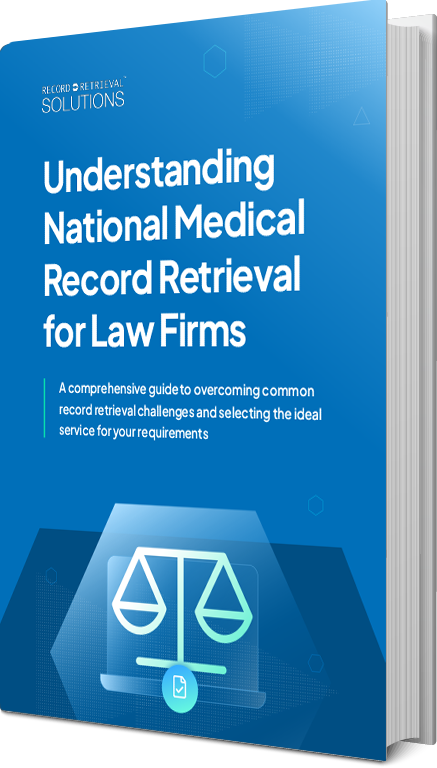In healthcare and law, understanding the components and significance of a medical release form can prevent overburdening your practice unnecessarily.
At the heart of effective patient information management, these forms ensure that medical records are shared with the necessary parties while maintaining compliance with the Health Insurance Portability and Accountability Act (HIPAA) regulations.
This requires a precise understanding of both legal and practical dimensions to safeguard patient privacy and avoid potential liabilities.
Medical Release Form: What is it?
A medical release form serves as a legal document that authorizes the disclosure of Protected Health Information (PHI) from one healthcare entity or professional to another.
To function effectively, it must meet specific compliance standards that detail patient information, delineate the purpose and scope of the request, and specify who may receive the information.
Each form must also carry an authorization signature, enhancing its legal validity, while incorporating features such as revocation clauses to protect patient interests.
Purpose of a Medical Release Form
A medical release form is a pivotal tool in the healthcare and legal fields, designed to empower patients by allowing them to authorize the sharing of their confidential health information.
This legal document is instrumental in facilitating effective communication between healthcare providers while respecting and upholding a patient’s right to privacy. Although its importance cannot be overstated, it is well-regulated to ensure the sensitive handling of private health information, aligning with various laws, such as HIPAA.
While generally required for releasing PHI to third parties, the medical release form also grants specific powers to patients, which can be revoked, reassigned, or limited to align with their preferences, reinforcing their autonomy over personal health data.
Facilitating the Disclosure of PHI
A well-drafted medical release form serves as the cornerstone of legal authorization, enabling healthcare providers to disclose a patient’s protected health information to clearly identified parties.
The HIPAA necessitates a properly executed medical release form to ensure any shared health information adheres to strict privacy regulations. Healthcare providers must handle these forms diligently, specifying the duration and extent of the authorization, indicating which portions of the patient’s medical records are permitted to be shared, and with whom.
Such specificity provides clarity and direction in the release process, helping to prevent unauthorized disclosures and ensuring that only necessary information is disseminated.
The authorization framework also allows for flexibility on the part of the patient, as they retain the right to rescind their consent at any time, thereby maintaining control over their health information.
This mechanism not only builds trust but also facilitates collaboration between healthcare professionals and third-party entities, such as researchers or legal representatives, all within a legal and ethical framework.
Ensuring HIPAA Compliance
The HIPAA Privacy Rule bestows upon patients and their representatives the right to access their medical records, thereby promoting transparency and empowering patients with control over their health data.
A fundamental HIPAA requirement is that even with patient consent, the release of medical records should adhere to the principle of minimum necessary disclosure. This principle restricts the release of information to only that which is needed to accomplish the intended purpose.
Therefore, the obligation to safeguard patient medical records is both ethical and legal, aligning with HIPAA’s overarching goals of protecting patient confidentiality and ensuring data security in the age of digital information.
Key Elements of a Compliant Medical Release Form
A medical release form is a key document that forms the backbone of effective and legally compliant communication between patients and healthcare entities.
This form empowers patients with the autonomy to regulate who can access their confidential health information, thereby facilitating necessary communication between healthcare providers, insurance companies, and legal representatives.
Key elements central to a compliant medical release form include the capture of clear patient information, a definitive scope and purpose for the request, precise identification of third-party recipients, and an authorization signature accompanied by a date.
Additionally, details on the specific information to be released, any applicable restrictions and limitations, and a comprehensive revocation clause must be included to ensure the patient’s privacy and control over their health data.
Clear Patient Information
A medical release form’s primary function is to grant patients the authority to oversee the dissemination of their medical records.
This form not only maintains patient privacy but also streamlines communication among healthcare professionals by ensuring that personal health data is only shared with parties explicitly designated by the patient.
Compliance with privacy laws, including the HIPAA Privacy Rule, is central to this process, safeguarding sensitive health information from unnecessary exposure. Patients use the form to empower healthcare providers, allowing them to share their medical details with entities such as insurance companies or family members involved in treatment decisions.
Notably, the powers conferred through a medical release can be revoked or reassigned at any point, preserving patient autonomy over their health records.
Purpose and Scope of the Request
The scope of a medical release form is crucial as it allows patients to authorize a third party to access their specific health records. This enables essential information sharing by healthcare providers while keeping within the boundaries of the patient’s consent. Importantly, patients maintain the right to revoke or reassign this authority whenever they choose.
Typically, patients are required to sign a medical release form if they wish to have their medical records accessible to external entities, such as attorneys.
However, sharing information for standard healthcare operations, like prior authorizations or claims payments, does not necessitate a signed release.
Thus, the form ensures the protection of a patient’s protected health information (PHI) and adherence to applicable regulations.
Identification of Recipients
A compliant medical release form precisely designates who may access the patient’s health records, often including other healthcare providers or legal representatives. By specifying these recipients, patients retain control over the distribution of their medical information.
Healthcare professionals are permitted to share the patient’s health data as outlined in the release form, ensuring that access is regulated and compliant with HIPAA requirements. This controlled access safeguards sensitive health details under privacy laws, and patients retain the flexibility to revoke or update the authorization regarding specific recipients at any time through their release form.
Authorization Signature and Date
A critical element of a medical release form is the signature of the patient authorizing the sharing of their medical records.
This signature is necessary for healthcare providers to legally transfer patient information to a specified entity, such as an attorney. If at any point the patient decides to revoke their permission, they must sign a new release form to resume any further sharing of personal health information.
Often, an expiration date is included within the release form to restrict its use to the original purpose and timeframe. Should any errors or omissions be present in the form, a new document must be signed to ensure the validity and accuracy of the authorization.
Specification of Information to be Released
Medical release forms allow patients to outline precisely which aspects of their health records can be shared with designated third parties.
This specificity affords patients the ability to authorize the sharing of protected health information (PHI) for particular purposes, such as insurance claims or involving family members in treatment decisions.
Patients can revoke or reassign permissions granted under the medical release form at any point should their preferences change. Moreover, a signature on the form allows healthcare providers to deliver comprehensive medical records to legal representatives, facilitating any required evaluations or legal proceedings.
Restrictions and Limitations
While healthcare providers may share personal health information for standard operations without a signed release form, such as obtaining prior authorizations or processing claims, they are prohibited from charging extra fees for processing these requests.
However, they may impose charges for the actual sending of records in various formats. The HIPAA outlines explicit protections against the unauthorized release of personal medical records, although patients may choose to waive these safeguards under particular conditions.
Specifically, a medical release form is necessary to empower certain entities, like lawyers, with access to medical records for legal purposes, ensuring the balance between privacy and necessary medical communication.
Revocation Clause
The medical release form includes a vital revocation clause, which allows the patient to rescind their authorization at any time.
Should they wish to continue sharing their health information after revocation, the patient must provide a new signature on a new form. This process ensures that all sharing of the patient’s health information ceases immediately upon revocation until further consent is given.
Healthcare providers are obligated to respect the patient’s decision to revoke their release form and must halt any disclosure of medical records until updated permission is secured. This clause supports the patient’s right to maintain control over the dissemination of their health information.
Legal Considerations
A medical release form is a vital legal document that empowers patients while assisting healthcare providers and legal professionals in navigating the complex landscape of privacy laws. It serves the dual purpose of maintaining compliance with these laws and facilitating effective communication between healthcare professionals.
This form grants patients control over their personal health information, allowing them to authorize or restrict access as needed.
However, not all healthcare operations require such a form. There are legal exceptions, primarily for standard practices like prior authorization by health insurance or claims processing. It’s essential to recognize that there are also situations where sharing patient health information without explicit consent is permitted, such as disclosures to treating physicians or for claims payment.
Understanding HIPAA Regulations
HIPAA is a critical legal framework that establishes national standards for protecting PHI. Both electronic health records and traditional paper documents fall under the purview of HIPAA, emphasizing its universal application in healthcare settings.
One of HIPAA’s significant provisions is granting patients and their legal representatives the right to access and obtain copies of their medical records, including detailed contents like X-rays and scans.
HIPAA also ensures stringent penalties for non-compliance, which underscores the critical nature of adherence to its guidelines. To safeguard patient privacy, HIPAA mandates that medical release forms cannot be amalgamated with other authorizations, illustrating the need for separate documentation per transaction.
The Department of Health and Human Services (HHS) is tasked with creating privacy standards under HIPAA, enhancing the protection of patient information across healthcare systems.
Risks of Non-compliance
Non-compliance with HIPAA and other privacy regulations can lead to far-reaching consequences, impacting patient trust and operational efficiency.
Unauthorized or unnecessary disclosure of sensitive medical history due to non-adherence is a significant risk. Covered entities are tasked with the responsibility to prevent improper disclosure of PHI.
Without a signed medical release form, any sharing of patient information beyond routine healthcare operations can breach privacy laws. This kind of non-compliance carries potential legal consequences, including financial penalties and delays in healthcare processes like claims payments or care coordination.
Maintaining patient trust is critical in healthcare, and any violation of privacy without consent can severely undermine this trust, affecting long-term patient care and relationships.
Ensuring Patient Competency
A key aspect of the medical records release process is ensuring that patients are fully competent and informed about their rights regarding the authorization or revocation of access to their health records.
This aspect of the release form process is crucial for the proper functioning of healthcare systems, enabling seamless communication while safeguarding patient privacy. Patients must be informed and understand that, even for uses such as research, their signed consent on a HIPAA-compliant medical release form is necessary.
With the medical release form in place, patients’ privacy remains protected while facilitating essential healthcare operations through a regulated flow of medical information. This ensures that all healthcare processes stay informed and compliant with privacy standards.
Legal Disclaimers
Legal disclaimers associated with medical release forms are indispensable for ensuring compliance with privacy laws and safeguarding patients’ rights to confidentiality. These disclaimers underscore the need for clear and precise language in medical forms to ensure patients and healthcare providers fully grasp the consent scope and limitations.
Strict adherence to HIPAA regulations prohibits combining releases with other permissions or authorizations, pointing to the necessity of separate notice and consent for each use of medical data. Errors in these legal disclaimers, such as unauthorized combinations with other permissions, necessitate obtaining a new consent form to maintain compliance and legality.
Legal disclaimers effectively communicate the responsibilities of all involved parties, helping prevent unauthorized disclosures and ensuring patient information remains protected under the current legal framework.
Digital Medical Release Forms
Digital medical release forms represent a significant evolution in managing patient information within the healthcare landscape.
These forms are designed to efficiently gather essential details and e-signatures from patients using any digital device, fostering a seamless interaction between healthcare providers and patients.
Importantly, these forms are crafted to comply with HIPAA regulations, safeguarding patient privacy by ensuring that protected health information is handled with the utmost confidentiality.
Patients can authorize healthcare providers, insurance companies, or other designated third parties to access their medical records electronically, promoting smoother and more secure communication in healthcare operations.
By facilitating electronic access, digital medical release forms empower patients to maintain control over their confidential health information and dictate who can access it, thereby upholding privacy rights central to modern healthcare protocols.
Benefits of Digital Forms
The shift from traditional paper-based systems to digital medical release forms offers numerous benefits, particularly in promoting efficiency and environmental sustainability. Digital forms eliminate the need for stacks of paperwork, resulting in a streamlined process for healthcare facilities and practitioners.
This paperless transition not only contributes to an eco-friendly approach but also simplifies the collection of patient information and e-signatures, making accessibility more straightforward and reducing logistical burdens.
Furthermore, digital forms enhance data security and regulatory compliance. By automatically complying with privacy protection laws, such as HIPAA, these forms reduce the likelihood of data breaches and ensure that patient confidentiality is maintained.
Healthcare providers gain the advantage of automated features, such as cloud-based storage and automatic data backups, which protect sensitive information from loss or unauthorized access. Ultimately, adopting digital forms reduces administrative hurdles, allowing healthcare practices to focus more on patient care and less on paperwork processing.
Enhancing Efficiency and Security
Medical release forms are essential tools in the seamless sharing of PHI whilst adhering to strict privacy standards. These forms give patients the power to grant healthcare providers the authority to disclose their medical records to specified third parties when needed.
This structured permission system not only aligns with privacy regulations but also ensures that the sharing of information upholds the integrity and security of patient data. Patients enjoy significant flexibility, as they retain the right to revoke or adjust the permissions granted in a medical release form at any point, thereby maintaining control over their personal information.
In specific healthcare settings, operational demands may necessitate the sharing of PHI without delays, such as for obtaining prior authorization from an insurance company.
In these cases, while a signed release form might not always be obtainable immediately, covered entities are still bound by the HIPAA Privacy Rule to protect personally identifiable information, safeguarding it from misuse or unauthorized access. This commitment ensures that all communication of health-related data, whether automated or manual, remains secure.
Ultimately, the use of medical records release forms for sharing sensitive information provides a robust framework for managing patient data, ensuring that each transaction involving patient information is conducted with precision and care, thereby honoring both the letter and the spirit of privacy legislation.
By integrating secure digital solutions, healthcare providers can continue to enhance the efficiency and security of patient communications, building trust and reinforcing the fundamental principles of patient privacy.
Updating Medical Release Forms
Medical release forms serve as essential legal documents, facilitating the compliant exchange of a patient’s confidential health information among healthcare entities. These forms are indispensable for ensuring that healthcare professionals are communicating effectively, thereby enabling the provision of timely and accurate medical treatment.
Particularly within the legal context, such as personal injury cases or insurance claims, a well-executed medical release form ensures that attorneys can obtain necessary patient data while adhering to privacy standards like HIPAA.
As the healthcare landscape continues to evolve, the implementation of online HIPAA-compliant medical release forms enhances accessibility and efficiency. These digital forms enable the collection of patient details and e-signatures from any device, reducing obstacles in obtaining patient consent for sharing medical information, especially when third parties, such as insurance companies, require access.
Keeping Up with Current Laws
In an age of rigorous privacy regulations, maintaining up-to-date medical release forms is crucial for compliance and the protection of patient rights.
According to HIPAA regulations, a medical records release form must stand alone and not combine with other consents, preventing any dilution of the patient’s informed consent. This ensures transparency and guards against the insertion of unauthorized clauses that could jeopardize privacy.
Additionally, while medical facilities may levy fees for dispatching records, charging for the processing of the record request remains disallowed. This distinction ensures that costs do not become a barrier to accessing necessary records.
As legal professionals operating in this domain, ensuring these stipulations are stringently adhered to not only protects clients but also mitigates the risk of HIPAA violations, which can result in significant penalties.
Regular Revision and Patient Reconfirmation
Consistent review and reconfirmation of medical release forms are integral to safeguarding patient autonomy and legal compliance.
Patients possess the authority to revoke their consent for information sharing at any time, underscoring the necessity for ongoing verification of permissions. Once consent is withdrawn, no further information can be shared, highlighting the importance of maintaining current forms.
Furthermore, in instances where a medical release form expires or is intended for use beyond its specified purpose, a new form must be signed by the patient. Incomplete or inaccurate documentation must be swiftly corrected through the execution of a new form to sustain the proper legal standing required for sharing health information.
Patients are urged to submit any revocation in written form, ensuring that their request is comprehensively documented and honored.
Best Practices for Patients and Healthcare Providers
The medical release form serves as a pivotal instrument in balancing the need for effective medical treatment with the imperative to safeguard patient information.
Whether facilitating the transfer of medical history between healthcare providers or ensuring that personal health details are only shared with authorized parties, a properly executed medical release form is key.
Its correct usage not only upholds patient privacy but also ensures compliance with HIPAA, preventing costly penalties related to privacy violations. As medical records increasingly move to online platforms, managing these release forms has become more streamlined and convenient, making compliance easier while providing flexibility for patients to control their personal information.
Ensuring Clarity and Understanding
A medical release form is a legal document granting healthcare providers the authority to share a patient’s personal health information with specific parties.
It plays a critical role in maintaining patient privacy while enabling the communication necessary for effective healthcare delivery.
Typically, no signed release is necessary for standard healthcare operations, such as obtaining prior authorization from health insurance companies.
However, when attorneys require medical records in cases such as medical malpractice, the patient’s explicit authorization through a release form becomes essential. This document ensures compliance with privacy regulations, including HIPAA, emphasizing patient consent and clarity in information sharing.
Understanding these parameters is vital for patients and healthcare professionals alike to prevent unauthorized disclosures and uphold legal standards.
The importance of a medical release form cannot be overstated. It is the cornerstone of patient-provider communication, ensuring that personal health information is managed judiciously.
Legal and ethical considerations require that consent be obtained explicitly, centering patient rights in healthcare interactions. Moreover, patients reserve the right to revoke permissions granted in a release form, underscoring its flexibility and the permanent autonomy patients have over their medical data.
Crucially, this tool enables healthcare providers to fulfill their responsibilities legally, ensuring that the flow of information aligns with not just operational, but also ethical requirements.
Safeguarding Patient Privacy
At the heart of patient privacy is the HIPAA, which sets rigorous standards for safeguarding protected health information. HIPAA mandates that healthcare providers obtain explicit patient consent before releasing medical records, ensuring that confidentiality and trust are maintained.
This adherence to privacy extends to promoting transparency by granting patients access to their medical records, empowering them with knowledge and control over their health data. The Privacy Rule within HIPAA further supports these rights by striking a balance between security and accessibility.
Healthcare providers are required to practice the minimum necessary disclosure principle, sharing only essential information pertinent to the specific context. This principle underscores the need to protect patient privacy while facilitating necessary medical processes.
Medical release forms are central to these transactions, allowing for the authorized use or disclosure of health information and ensuring comprehensive compliance with HIPAA’s privacy standards. Beyond legal compliance, these protective measures cultivate a healthcare environment where patient trust and privacy are respected as paramount, laying the groundwork for ethical medical practice.
Conclusion
In conclusion, a medical release form is a pivotal legal document that ensures the secure exchange of confidential health information between patients and healthcare providers.
By obtaining patient consent, it harmonizes the need for privacy under the HIPAA with the necessity for effective communication in medical care. While certain healthcare operations may be exempt from this requirement, it remains indispensable for managing sensitive patient data and facilitating the release of medical records.
Key Benefits of Medical Release Forms:
- Patient Privacy: Protects health information in compliance with privacy laws.
- Communication: Enables seamless communication between healthcare professionals and patients.
- Flexibility: Patients can revoke or amend consent at any time.
- Efficiency: Streamlines administrative tasks for healthcare and insurance entities.
By using a medical release form, healthcare providers and legal professionals can uphold patient privacy, comply with regulatory standards, and ensure comprehensive care, making it an essential component in modern healthcare management.
FAQs
What is a Medical Release Form?
A medical release form is a legal document that empowers patients to authorize the sharing of their confidential health information with specified third parties. This form is crucial for ensuring compliance with privacy laws and grants permission to healthcare providers to share personal health details.
Why is it Important?
Medical release forms are essential for safeguarding patient privacy rights and facilitating necessary communication among healthcare professionals. They ensure compliance with the Health Insurance Portability and Accountability Act (HIPAA) regulations, helping to avoid potential fines for unauthorized information sharing.
Who Needs to Sign It?
Patients must provide their signature to authorize medical providers to share their records with entities such as lawyers or insurance companies.
What Information Can Be Released?
The form can cover various aspects, such as medical history, treatment details, and other personal health information relevant to the request.
Who Can Receive the Information?
Designated third parties, like legal representatives, insurance companies, or other healthcare professionals involved in the patient’s care, can receive the information as specified on the form.






